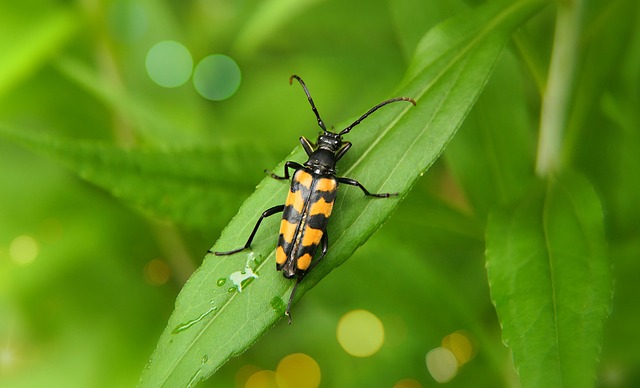Foreign grain beetles pose significant risks to food safety due to their eggs and larvae, which hide in dark areas and feed on organic matter. Early detection is crucial as larvae are most vulnerable during developmental stages. Professional cleaning services use specialized equipment and treatments for effective removal, focusing on deep cleaning, sanitization, decontamination, and prevention strategies like regular inspections, airtight storage, and maintenance of cleanliness to disrupt beetle life cycles and prevent future infestations.
Professional cleaning and sanitation services are essential for eliminating foreign grain beetle eggs and larvae, ensuring a safe and healthy environment. This comprehensive guide delves into the intricate world of these pests, their life cycles, and the significant impact of proper hygiene practices. We explore effective strategies for complete elimination and prevention, offering lasting protection against reinfestation. By understanding the threat posed by foreign grain beetles, businesses can implement robust cleaning measures to maintain a pest-free facility.
Understanding Foreign Grain Beetle Eggs and Larvae
Foreign grain beetle eggs and larvae can be a significant concern for any establishment, as these tiny invaders pose a serious threat to food safety and inventory damage. Understanding their life cycle is crucial in effective foreign grain beetles removal. The female beetle lays small, oval-shaped eggs, often in clusters, in dark, hidden areas where infested materials are stored. After hatching, larvae emerge, measuring up to 1/4 inch long, and begin feasting on organic matter, particularly starchy products like grains, pasta, and cereals.
During their development, larvae molt several times, eventually transforming into pupae before emerging as adult beetles. This entire process can take anywhere from 30 days to several months, depending on the species and environmental conditions. Identifying beetle eggs and larvae early is key, as they’re most vulnerable during these stages. Professional cleaning and sanitation services employ specialized equipment and treatments to eliminate eggs, larvae, and adults, ensuring a thorough foreign grain beetles removal process.
The Impact of Professional Cleaning and Sanitation
Professional cleaning and sanitation services play a pivotal role in eliminating foreign grain beetle eggs and larvae, which can be challenging to detect and eradicate without specialized equipment and expertise. These pests often hide in hard-to-reach corners, crevices, and hidden storage areas, making thorough inspection and treatment crucial for complete removal.
By enlisting the help of professionals, businesses and homes can benefit from comprehensive cleaning practices tailored to foreign grain beetle control. Advanced techniques, including deep cleaning, sanitization, and decontamination, ensure that every nook and cranny is examined and treated, preventing future infestations. This meticulous approach not only removes existing beetles but also disrupts their life cycles, rendering it an effective long-term strategy for maintaining a pest-free environment.
Effective Strategies for Elimination and Prevention
To effectively eliminate foreign grain beetle eggs and larvae, a multi-faceted approach is essential. Starting with thorough cleaning and sanitization is crucial. This involves deep cleaning all affected areas, focusing on hard-to-reach spots where eggs and larvae may hide. Using hot water and strong disinfectants, especially in kitchens and storage rooms, can help kill any present insects and their offspring. Regular vacuuming and dry cleaning of fabrics and textiles are also recommended to prevent reinfestation.
Prevention is the key to managing foreign grain beetles long-term. This includes maintaining a clean environment by promptly addressing spills and crumbs, storing grains and other attractants in airtight containers, and regularly inspecting and repairing any cracks or crevices that could serve as entry points. Monitoring through regular inspections and using traps can also help detect early signs of an infestation. By combining these effective strategies for elimination and prevention, homeowners and businesses alike can successfully mitigate and control foreign grain beetle populations.
Ensuring Long-term Protection Against Reinfestation
To ensure long-term protection against reinfestation by foreign grain beetles, it’s crucial to adopt a multi-faceted approach. Beyond one-time cleaning and sanitation efforts, ongoing maintenance and prevention strategies are essential. Regular inspections play a vital role in identifying potential entry points or signs of infestation early on. Seal any cracks or gaps in walls, floors, and ceilings to prevent adult beetles from accessing new areas.
Implementing proper storage practices is another critical component. Storing grains and other susceptible items in airtight containers and keeping them off the ground or in elevated bins can significantly reduce the risk of reinfestation. Additionally, maintaining a clean environment by promptly cleaning up spills and eliminating sources of moisture encourages a less welcoming habitat for these pests. These combined efforts will provide a robust defense against foreign grain beetles removal and help maintain a pest-free space over time.
In conclusion, professional cleaning and sanitation are indispensable tools in the effective elimination of foreign grain beetle eggs and larvae. By understanding the nature of these pests and implementing robust strategies for prevention and control, businesses can ensure a clean and safe environment. Regular maintenance and long-term protection measures are key to preventing reinfestation, making professional intervention a vital step towards maintaining a healthy and thriving space. When it comes to foreign grain beetle removal, these comprehensive approaches prove to be the most efficient methods for achieving and maintaining a pest-free facility.
